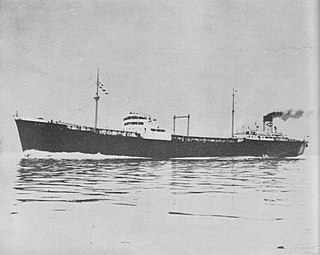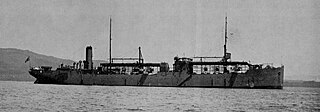
Balikpapan is a seaport city in East Kalimantan, Indonesia. Located on the east coast of the island of Borneo, the city is the financial center of Kalimantan. Balikpapan is the city with the largest economy in Kalimantan with an estimated 2016 GDP at Rp 73.18 trillion. The city has the third busiest airport in Kalimantan after that in Banjarmasin and Pontianak, namely Sultan Aji Muhammad Sulaiman Sepinggan Airport. Port of Semayang was the second busiest seaport in East Kalimantan, after that in Samarinda.
The following lists events that happened during 1961 in Singapore.

The Laju incident, also known as the Laju ferry hijacking, occurred on 31 January 1974 in Singapore. Four armed men from the terrorist groups Japanese Red Army and Popular Front for the Liberation of Palestine attacked the Shell oil refinery complex on Pulau Bukom and later hijacked the ferryboat Laju and took its five crew members hostage. The crisis was resolved after the Singapore government provided the terrorists safe passage to the Middle East in exchange for the release of the hostages.

The Whiddy Island disaster, also known as the Betelgeuse incident or Betelgeuse disaster, occurred on 8 January 1979, around 1:00 am, when the oil tanker Betelgeuse exploded in Bantry Bay, at the offshore jetty for the oil terminal at Whiddy Island, Ireland. The explosion was attributed to the failure of the ship's structure during an operation to discharge its cargo of oil. The tanker was owned by Total S.A., and the oil terminal was owned by Gulf Oil.

The Battle of the Caribbean refers to a naval campaign waged during World War II that was part of the Battle of the Atlantic, from 1941 to 1945. German U-boats and Italian submarines attempted to disrupt the Allied supply of oil and other material. They sank shipping in the Caribbean Sea and the Gulf of Mexico and attacked coastal targets in the Antilles. Improved Allied anti-submarine warfare eventually drove the Axis submarines out of the Caribbean region.
Silvanus was a steam tanker built in 1920–1921 by the Southwestern Shipbuilding & Drydock Company of San Pedro for the Anglo-Saxon Petroleum Company with the intention of transporting oil and petroleum products between Dutch East Indies and various destinations in Europe and the Far East. The tanker was employed in this capacity through the first part of 1926. In April 1926 Silvanus collided with the tanker Thomas H. Wheeler in the Mississippi River, resulting in the explosion and death of 26 seamen. Silvanus was declared a total loss and sold at auction to the newly formed Petroleum Navigation Company of Texas. The tanker was rebuilt and renamed Papoose and started operating in March 1927. In March 1942, she was attacked by German U-boat U-124 off the coast of North Carolina. The ship drifted for several days and eventually sank in 200 feet (61 m) of water off Oregon Inlet.

USS Victoria (AO-46) was an oiler for the United States Navy in World War II, and the second ship to bear the name. She was built in 1917 as SS George G. Henry in San Francisco for the Los Angeles Petroleum Company. During World War I, the ship was requisitioned by the U.S. Navy and employed as USS George G. Henry (ID-1560). Between the two world wars and at the beginning of the second, she served as a civilian tanker, initially under American registry, but later under Panamanian registry.
MV Empire Cross was a motor tanker that was built in England in 1945. She was launched as an Empire ship for the Ministry of War Transport (MoWT). In 1946 she exploded and sank in Haifa in Palestine, killing 25 of her crew.
British Drummer was a 3,750 GRT tanker built in 1945 as Empire Ensign by J L Thompson & Son Ltd, Sunderland, Co Durham, United Kingdom for the Ministry of War Transport (MoWT). She was sold into merchant service in 1947 and renamed British Drummer. A sale to Norway in 1957 saw her renamed Anella. In 1958, a further sale saw her renamed Norse Commander. In September 1966, she developed boiler defects that were deemed uneconomic to repair, and she was scrapped in November that year.

Eagle Oil and Shipping Company was a United Kingdom merchant shipping company that operated oil tankers between the Gulf of Mexico and the UK. Weetman Pearson, 1st Viscount Cowdray founded it as the Eagle Oil Transport Company in 1912 and sold it to Royal Dutch Shell in 1919. It was renamed Eagle Oil and Shipping Company in about 1930, and remained a separate company within the Royal Dutch Shell group until it was absorbed in 1959.
William Henry Beale Jr. was a US military and paramilitary aviator. In the Second World War, he was in the USAAF and flew bombing missions in the northern Pacific theater. In the Permesta rebellion in Indonesia in 1958 he flew bombing missions for the CIA. His career ended on a CIA covert mission in Laos in 1962 when he was killed in a plane crash.
SS San Flaviano was a British oil tanker owned by Eagle Oil and Shipping Company, a British subsidiary of Royal Dutch Shell. She was built by Cammell Laird in England in 1956 and attacked and sunk by the CIA in Borneo in 1958.
MV Daronia was a 1930s British oil tanker owned by Anglo-Saxon Petroleum, a British subsidiary of Royal Dutch Shell. She was launched in 1938 by Hawthorn, Leslie in North East England and completed in 1939. She was one of a class of 20 similar tankers built for Anglo-Saxon.

Kuroshio Maru was a tanker that was built in 1938 for Japanese owners. She was chartered by the Imperial Japanese Navy and Imperial Japanese Army during World War II: the ship was sunk in January 1945 at Takao, Formosa by American aircraft. Salvaged in 1946, she was allocated as a war prize to China and renamed Yung Hao, but was forced to remain at Hong Kong by the British. She was requisitioned by the Admiralty during the Korean War and allocated to the Royal Fleet Auxiliary. She was to have been named RFA Surf Pilot but due to her poor condition she did not serve in the Royal Fleet Auxiliary. She served as Surf Pilot, a tender to HMS Terror until 1958 and was subsequently scuttled off Pulau Aur, Malaya in 1960.
Silverlip was a steam tanker built in 1902 by the W.G. Armstrong, Whitworth & Company of Walker for Sir Marcus Samuel owner and chairman of Shell Transport & Trading Company of London. The ship was designed and built to carry liquid cargo and spent her career carrying petroleum products from Borneo and Texas to United Kingdom and Europe.

Notoro (能登呂) was an oiler of the Imperial Japanese Navy commissioned in 1920, which was rebuilt in 1924 into a seaplane tender and in 1941 back into an oiler. She participated in the First Shanghai Incident in 1932 and the Second Sino-Japanese War since 1937. In the fall of 1941, she was rebuilt back into an oiler. On 9 January and 20 September 1943, she was damaged by US Navy submarines but returned to service after repairs. On 29 June 1944, she was hit by two torpedoes launched by submarine USS Flasher. During repairs in Singapore Notoro was again damaged on 5 November 1944, this time by B-29 bombers. No further repairs were made until the end of the war and she was probably scrapped in 1947.






